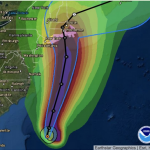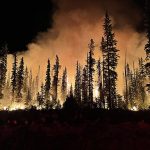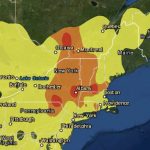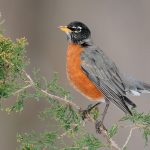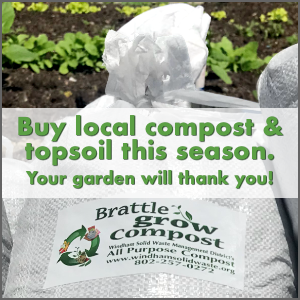It’s an ill wind that blows no good… Just kidding. As most of us are probably aware, there’s been a lot of smoke in the air recently, although what zephyr it blew in on I have no idea. We noticed it last night around sunset, and by the time we went to bed, we could see this strange fog enveloping the area, detectable even in the dark. The trees seemed really distant, we could only see one star, and when a car drove by, there was complete white-out and all the trees disappeared. Although the National Weather Service forecast was calling it “haze,” it seemed pretty smoky to me.
This morning, it cleared off, but after noon, it rolled back in like gangbusters. I was surprised to discover that not only can you see the smoke, you can smell and taste it too. I even noticed my eyes burning which is normal if you’re in a smoky environment, but frankly, you just don’t expect to be in a smoky environment as a result of a fire 2500 miles away.
Cutting to the chase, it’s worth noting that for this afternoon at least, out air quality puts us in an Orange zone as indicated on the EPA air quality web page; this means “Unhealthy for Sensitive Groups. If you cross the river to NH or drive over to NY, the adjacent areas there are Red zones — which is simply “unheathy air.” You can see the regions highlighted on the map at the link below.

